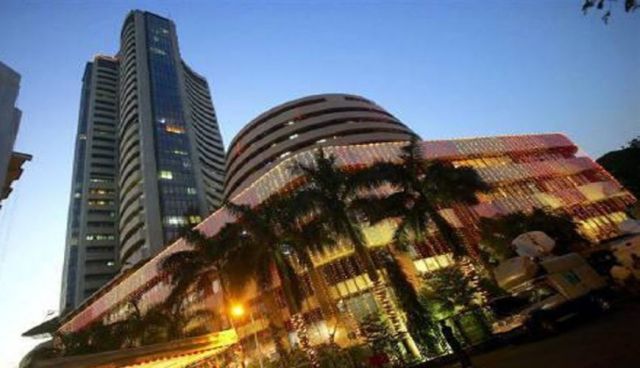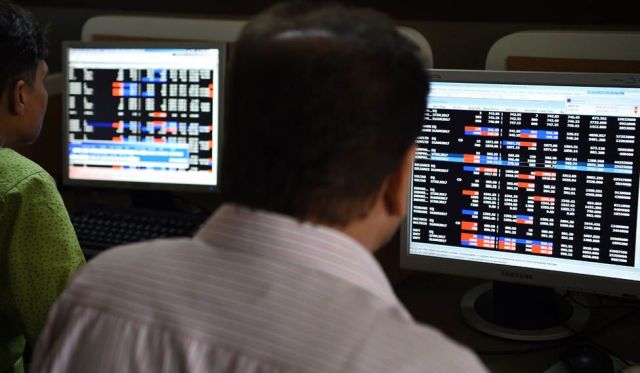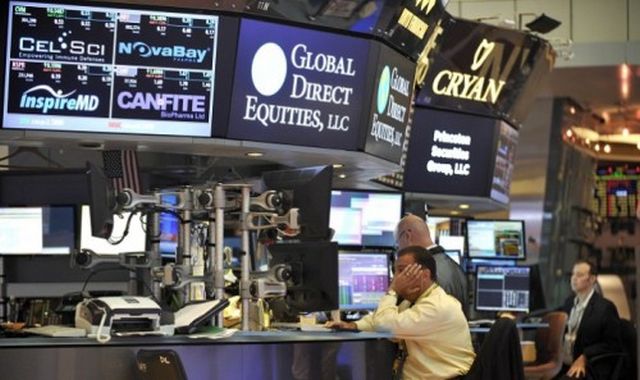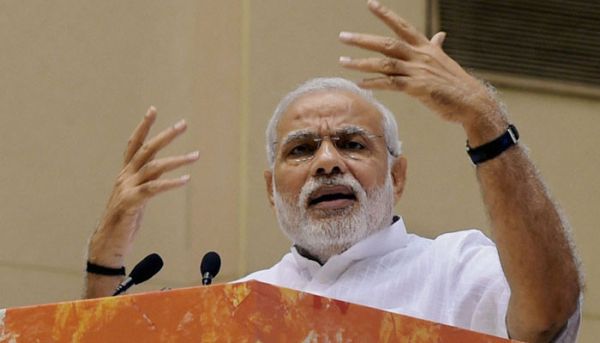
by admin | May 25, 2021 | Economy, Markets, News
 By Rohit Vaid,
By Rohit Vaid,
Mumbai : The ongoing earnings results season, along with the heightened geo-political tensions in the Middle East and a key macro-economic inflation data point are expected to influence the Indian equity markets’ trajectory during the coming week, analysts opined.
“Next week the focus will again be on earnings, with IndusInd Bank setting the tone for bank earnings, especially on the fresh loan loss provisions,” Devendra Nevgi, Founder and Principal Partner, Delta Global Partners, told IANS.
“The oil prices would be watched closely for any flare-up due to geo-political (events). Some of the macro-data has been encouraging, which would keep the sentiment buoyant.”
Companies like ACC, Mindtree, Cyient and Tata Consultancy Services are expected to announce their fourth quarter (Q4) earning results in the coming week.
“The earnings recovery was elusive for the last few years, even though the market scaled new heights at every interval,” Vinod Nair, Head Of Research at Geojit Financial Services, told IANS.
“However, the last two quarters have given some ray of hope to investors for a pick-up in earnings given better-than-expected GDP growth and normalisation in GST implementation. Q4 PAT growth expectation for Nifty50 and Sensex companies is around 15 per cent YoY.”
According to D.K. Aggarwal, Chairman and Managing Director of SMC Investments & Advisors: “The upturn in the economy and a favourable base effect notwithstanding, the Q4FY18 earnings, particularly from FMCG companies, are expected to see a healthy growth.”
“Nifty is expected to move in the range of 10,300-10,600 points and Bank Nifty to trade in the range of 24,700-25,300 points.”
Besides the Q4 results, investors will look out for the upcoming macro-economic data points — Wholesale Price Index — on Monday. The Balance of Trade figures will also influence sentiments. The trade data was released after the close of market hours on Friday.
On technical levels, the underlying trend of the National Stock Exchange’s (NSE) Nifty50 remains bullish.
“Technically, the Nifty remains in uptrend and further upsides are likely once the immediate resistance of 10,618 points is taken out,” said Deepak Jasani, Head of Retail Research for HDFC Securities.
“Crucial support to watch for any weakness is at 10,276 points.”
Last week, the key Indian equity indices — the Bombay Stock Exchange (BSE) Sensex and the NSE Nifty50 — rose for the third consecutive week as healthy macro-economic data as well as fading global trade war fears boosted investors’ sentiments.
Consequently, the barometer 30-scrip Sensitive Index (Sensex) of the BSE surged by 565.68 points or 1.68 per cent to close at 34,192.65 points.
Similarly, the wider Nifty50 of the NSE)made healthy gains. It closed trade at 10,480.60 points — up 149 points or 1.44 per cent from its previous week’s close.
(Rohit Vaid can be contacted at rohit.v@ians.in )
—IANS

by admin | May 25, 2021 | Economy, Markets, News
 Mumbai : The key Indian equity indices provisionally closed in the green on Thursday supported by healthy buying in IT, Teck (technology, media and entertainment) and banking stocks.
Mumbai : The key Indian equity indices provisionally closed in the green on Thursday supported by healthy buying in IT, Teck (technology, media and entertainment) and banking stocks.
However, selling pressure in metal, healthcare and realty stocks limited the gains.
According to market observers, gains were further trimmed as caution prevailed ahead of the release of macro economic data such as the Index of Industrial Production and the Consumer Price Index later in the evening.
At 3.30 p.m., the wider Nifty50 of the National Stock Exchange (NSE) provisionally closed higher by 41.50 points or 0.40 per cent at 10,458.65 points.
The barometer 30-scrip Sensex of the BSE, which opened at 33,987.55 points, closed at 34,101.13 points — up 160.69 points or 0.47 per cent from its previous session’s close.
The Sensex touched a high of 34,177.44 points and a low of 33,924.88 during the intra-day trade.
The BSE market breadth was, however, bearish with 1,519 declines and 1,142 advances.
TCS, Infosys, Axis Bank, Tata Motors (DVR) and Asian Paints were the top gainers on the BSE. Top losers were Dr Reddy’s Lab, Tata Steel, Sun Pharma, State Bank of India and Adani Ports.
On the NSE, HCL, Tata Consultancy Services and Infosys led the gainers while Vedanta, Lupin and Dr Reddy’s Lab were among the top losers.
On Wednesday, the indices settled on a flat-to-positive note after tepid trade throughout the session.
The Nifty50 rose 14.90 points or 0.14 per cent to close at 10,417.15 points, while the Sensex closed at 33,940.44 points — up 60.19 points or 0.18 per cent.
—IANS

by admin | May 25, 2021 | Business, Economy, Finance, Large Enterprise, Markets, News, Online Marketing, Technology
 New Delhi : Digital transformation will add close to $154 billion to India’s GDP by 2021 and increase the growth rate by one per cent annually, software giant Microsoft said on Wednesday.
New Delhi : Digital transformation will add close to $154 billion to India’s GDP by 2021 and increase the growth rate by one per cent annually, software giant Microsoft said on Wednesday.
According to a joint report by Microsoft and IDC Asia/Pacifc, in 2017, about four per cent of India’s GDP was derived from digital products and services created directly through the use of digital technologies such as mobility, Cloud, Internet of Things (IoT) and Artificial Intelligence (AI).
“India is clearly on the fast-track towards digital transformation. Within the next four years, it is estimated that nearly 60 per cent of India’s GDP will have a strong connection to the digital transformation trends,” Anant Maheshwari, President, Microsoft India, told reporters here.
“Organisations are increasingly deploying emerging technologies such as AI that will accelerate digital transformation led growth even further,” Maheshwari added.
The survey took into account 1,560 business decision makers in mid and large-sized organisations across 15 economies in the region.
According to the survey, organisations are seeing significant and tangible improvements from their digital transformation efforts across these benefits in the range of 11-14 per cent.
“Business leaders expect to see more than 40 per cent improvements in those key areas by 2020, with the biggest jump expected in productivity, customer advocacy as well as profit margins,” the report said.
Digital transformation has increased productivity, customer advocacy, cost reduction, revenue from new products and services as well as profit margin for the enterprises.
“These benefits will also improve by at least 40 per cent in the next three years, with the biggest jump expected in productivity, customer advocacy as well as profit margin,” the survey noted.
The study indicated that while 90 per cent of organisations in India are in the middle of their digital transformation journey, only 7 per cent in the entire region can be classified as “Leaders”.
“Leaders” are experiencing double the benefits of “Followers” and these improvements will be more pronounced by 2020.
Almost half of “Leaders” (48 per cent) will have a full digital transformation strategy in place.
Emerging technologies such as AI (including cognitive services and robotics) and IoT are areas where “Leaders” are investing in.
Besides these emerging technologies, “Leaders” are also more interested in investing in big data analytics to mine data for actionable insights than others.
“Organisations need to invest in building their ecosystem, from employees, to customers, to partners, across their value chain by gaining new insights through new data sources, and incorporating digitization in their products and services,” said Anil Bhansali, Managing Director, Microsoft India (R&D).
“The pace of digital transformation is accelerating, and IDC expects that by 2021, at least 60 per cent of India’s GDP will be derived from digital products and services,” added Daniel-Zoe Jimenez, Research Director Digital Transformation Practice Lead, IDC Asia/Pacific.
—IANS

by admin | May 25, 2021 | Economy, Markets, News, Opinions
 By Amit Kapoor,
By Amit Kapoor,
The much-dreaded trade war has come dangerously close to fruition after the tit-for-tat exchanges between the United States and China over the course of the past week.
Last Tuesday, the US, blaming China for intellectual property theft, released a list of 1,300 products that could possibly be imposed with a tariff of 25 percent — worth a total of $50 billion — unless China mends it ways. The very next day China came up with a list of US imports that could be charged with a 25 percent tariff, again worth approximately $50 billion.
Trump retaliated the following day saying that the US government is considering imposition of tariffs on another $100 billion of Chinese imports. In response, China warned on Friday that it was ready with a “fierce counter-strike” of fresh trade measures if Trump follows through on his threat and that it would fight the US “at any cost”.
At the time of writing (April 9), neither of the two nations had followed through on their threats and, hopefully, a more conciliatory tone will be adopted this week. What needs to happen is quite straightforward. China should recognise that some of the US claims have merit. Beijing has long demanded that US businesses relinquish their intellectual property rights if they want to gain access to Chinese markets. For instance, if a US car manufacturer wants to sell cars in China, it has to team up with a local manufacturer and transfer all the technology or face steep import tariffs. China has been benefiting from this rule for decades. In case China ends this, Trump could withdraw his threats of tariffs and both sides would be in a position to disengage.
It is also more in China’s interests to avoid a full-blown trade war. The country is still an export-dependent economy and it sells more goods to the US than it buys. But China, with its ambitions of being the next superpower, might not back down so easily. It would prefer not to be seen as yet another developing economy with no option but to do as Washington dictates. It also has some damning arsenal in its kitty to pose a credible threat to the US: A massive reserve of US Treasury bills. If it plans to dump these bonds on the world markets, it would mean catastrophe.
Therefore, it is in everyone’s best interests that sense prevails, and a trade war is avoided at all costs.
A positive outcome from this affair has been the resilience shown by the emerging economies around the world. If history is any indication, a situation like a tit-for-tat trade war between two of the world’s largest economies should have sent capital rushing towards safe assets in the US, leaving the emerging economies high and dry. That was the case until quite recently. A case in point is the “taper tantrum” of the US Federal Reserve which took place in 2013 and a similar flight of capital destabilised the developing world economies.
Morgan Stanley famously coined the phrase “fragile five” to describe the precarious situation in which Brazil, India, Indonesia, South Africa and Turkey found themselves. Now, the emerging economies are seeming more like safe havens. Since the turmoil of 2013, these nations have worked towards strengthening their balance sheets and making themselves resilient to global shocks.
As a result, considerable confidence is being shown towards the assets of these countries. Emerging Portfolio Fund Research data shows that in the first quarter of this year $43 billion has flown into equity funds of emerging markets. These inflows already account for two-thirds of their value in the whole of last year. In contrast, equity funds in the developed markets have attracted merely $25.5 billion in the first quarter of this year and the flows have also been more volatile than in emerging economies. The emerging market currencies have also been up four per cent against the dollar this year. These trends go on to show the strength of the emerging markets in sharp contrast to the dire situation just a few years ago.
Even if a trade war does break out and the global scenario does not remain as promising, India might emerge relatively unscathed. In the unlikely scenario where the carefully established rules-based trade system is forsaken, relationships will define trading patterns. Prime Minister Narendra Modi has spent the last four years building strong connections with countries around the world. These efforts would pay much-needed dividends to the Indian economy if a trade war ensues.
Whatever be the case, it is quite clear that the liberal world order established in the post-war era is going through dynamic changes. The developed world is uneasy about ceding its long-held power to the emerging economies. India still has a long way to go, but China is rapidly catching up in terms of technological competence. It is time to reset the rules of the global trading regime and ensure a fair and level playing field among countries with fundamentally disparate economic systems.
(Amit Kapoor is chair, Institute for Competitiveness. The views expressed are personal. He can be contacted at amit.kapoor@competitiveness.in and tweets @kautiliya. Chirag Yadav, senior researcher, Institute for Competitiveness, has contributed to the article)
—IANS

by admin | May 25, 2021 | Business, Corporate, Corporate finance, Corporate Governance, Economy, Finance, Investing, Medium Enterprise, News, Politics, SMEs
 New Delhi : Prime Minister Narendra Modi on Sunday hailed the union government scheme of Mudra Yojana for giving substantial impetus to the Micro, Small and Medium Enterprises (MSME) sector and said it is crucial for the country’s transformation.
New Delhi : Prime Minister Narendra Modi on Sunday hailed the union government scheme of Mudra Yojana for giving substantial impetus to the Micro, Small and Medium Enterprises (MSME) sector and said it is crucial for the country’s transformation.
Launched in 2015, the Pradhan Mantri Mudra Yojana (PMMY) was introduced to cater to entrepreneurs who were either in their early stage or require lesser funds in order to get their business running.
As the scheme completed three years of its launch on Sunday, Modi tweeted his delight and said that his government was undertaking a series of steps and reforms to facilitate further growth in the sector.
“Through Mudra Yojana, the MSME sector is receiving a substantial impetus. MSME is a sector that is crucial for India’s transformation and our government is undertaking a series of steps and reforms to facilitate further growth in the sector,” Modi said.
He said the Mudra Yojana was furthering a spirit of enterprise and self-reliance among youth and women. The scheme was launched for providing loans upto Rs 10 lakh to the non-corporate, non-farm small and micro enterprises.
“A substantial number of Mudra beneficiaries are women and youngsters from the Scheduled Caste, Scheduled Tribes and Other Backward Class communities, which is extremely heartening,” he said.
He said the PMMY was launched to give wings to the aspirations of citizens and harness the entrepreneurial energy among youth.
“…I am delighted to see how Mudra Yojana has brought prosperity in the lives of many.”
The Prime Minister also took the opportunity to invite the beneficiaries of the scheme to share their success stories and said he would meet some of them at his official residence on April 11.
“Dear friends on social media, do share with me success stories of Mudra Yojana that you know about. I would love to meet some of the friends from the world of social media who share these stories,” he said.
“…I look forward to a special programme!… It would be wonderful to speak to them and personally hear about their journeys,” he said.
—IANS





